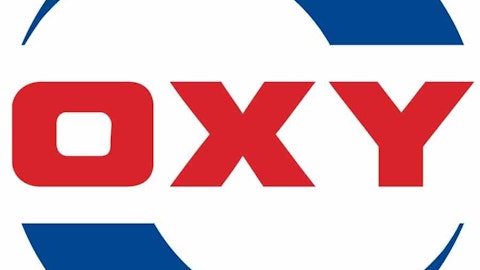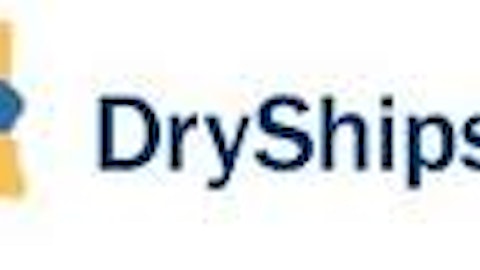Sometimes the least obvious investments on the market are the ones that yield the best returns for your portfolio. While the incredible transformation of the domestic oil and natural gas industry has likely been acknowledged by investors across the spectrum, there are hidden opportunities if you look hard enough. One such less obvious investment is CARBO Ceramics Inc. (NYSE:CRR), which supplies proppants to companies drilling or exploring oil and gas reserves around the world.

Although the company faced depressed natural gas drilling activity in North America in 2012 and increasing competition from low-quality Chinese ceramic proppants, there are several good reasons to make room for CARBO on your watchlist – or even your portfolio – in 2013. Here are three reasons to go long.
1. Superior products
Unfortunately for completion engineers (the individuals modeling wells to optimize proppant selection), the process is a little more complex than simply pumping some beads into their newly drilled wells and waiting for oil and gas to shoot up. Can a driller get away with using a cheaper proppant such as sand? Or can more value be unlocked by using pricier ceramic proppants?
While each well poses unique challenges, completion engineers are increasingly turning to ceramic proppants to increase productivity and conductivity, or the permeability, of wells. This is especially true in horizontal drilling, when fractures can reach hundreds or thousands of feet across and proppants need to spread as far as possible without blocking the flow of hydrocarbons. What’s the advantage?
Sand proppants sold by Hi-Crush Partners LP (NYSE:HCLP) and U.S. Silica Holdings Inc (NYSE:SLCA) may be cheaper, but are more likely to be crushed at high pressures. The resulting small particles, or fines, have been shown to have severe consequences for well productivity. A recent study that appeared in the Society of Petroleum Engineers found that “a 5% generation of fines reduces (hydrocarbon) flow through fractures by 60%.”

Source: CARBO Ceramics
As the picture above demonstrates, the low conductivity and low crush resistance of sands is owed to the non-uniform size and shape of granules. Ceramic proppants are engineered, thus give CARBO much more control over uniformity in size and shape. The result? An average 20% increase in initial production rates and a 20% increase in estimated ultimate recovery. In other words, oil and gas drillers can spend a little more on ceramic proppants to greatly enhance their production and profitability.
2. Focus on diversity
Last year, 92.3% of CARBO’s revenue could be chalked up to ceramic proppant sales. While the company is an industry leader, that dependency is a major red flag for investors and management. Much work lies ahead, but management has been working feverishly to expand its businesses and create new revenue streams.
At the end of 2012 the company offered a product mix that included six ceramic proppants, one resin-coated sand, two traceable proppants (used to determine flowback characteristics), a portfolio of well modeling software, and a rapidly growing consulting services business.
Although non-proppant businesses generated less than $50 million in revenue in 2011 they are growing rapidly. The company notched full-year revenue growth of 33% for its consulting business, 46% for its software segment, and 21% for Falcon Technologies, its environmental risk reduction business. An industrywide focus on repairing the environmental image of fracking technologies caused Falcon’s client base to soar 25% in 2012.
Topping off the progress was total proppant sales of 1.71 billion pounds (1.54 billion pounds of ceramic proppants), which represented 10% of the total worldwide proppant market. Sales growth increased a measly 3% in the United States – the company’s key market – but jumped 25% internationally thanks to increased demand in China, Russia, and Mexico.
3. Growth opportunities
Although management expects 2013 to be another slow year in terms of drilling activity, the company is pursuing opportunities for the long term. A new facility in Georgia – the company’s seventh worldwide – will grow CARBO’s annual production capacity of ceramic proppant to 2 billion pounds in 2014, while a new distribution center opening this year will give an increased presence in the Bakken region.
A new ceramic proppant under development for use in ultra-deepwater drilling wells, such as those in the Gulf of Mexico and off the coast of Brazil, will be launched at the end of 2013. The product will be capable of sustaining depths greater than 30,000 feet; CARBO hopes to piggyback on the growth in the next frontier of offshore drilling.
This represents a potentially enormous opportunity for CARBO. Consider that ultra-deepwater driller Seadrill Ltd (NYSE:SDRL) has expanded from three rigs in 2005 to boasting the industry’s fifth-largest fleet. As of 3Q12 the company had over $21 billion in backlog revenue, which highlights the incredible future growth of the industry and provides plenty of incentives for CARBO to scale up production of its newest product.
Foolish bottom line
CARBO Ceramics may continue to battle low drilling activity in 2013, but there is a solid case to be made for the company’s long-term prospects. A focus on expanding non-proppant services in 2012 is an encouraging sign that management is trying to diversify. However, the company may be too dependent on proppant sales to a relatively select few markets. Investors will want to keep up with this new series of articles that will identify potential opportunities while acknowledging risks facing the company.
The article 3 Reasons to Buy CARBO Ceramics originally appeared on Fool.com and is written by Maxx Chatsko.
Fool contributor Maxx Chatsko has no position in any stocks mentioned. Check out his personal portfolio, his CAPS page, or follow him on Twitter @BlacknGoldFool to keep up with his writing on energy, bioprocessing, and emerging technologies.The Motley Fool recommends Seadrill. The Motley Fool owns shares of Hi-Crush Partners and Seadrill.
Copyright © 1995 – 2013 The Motley Fool, LLC. All rights reserved. The Motley Fool has a disclosure policy.




